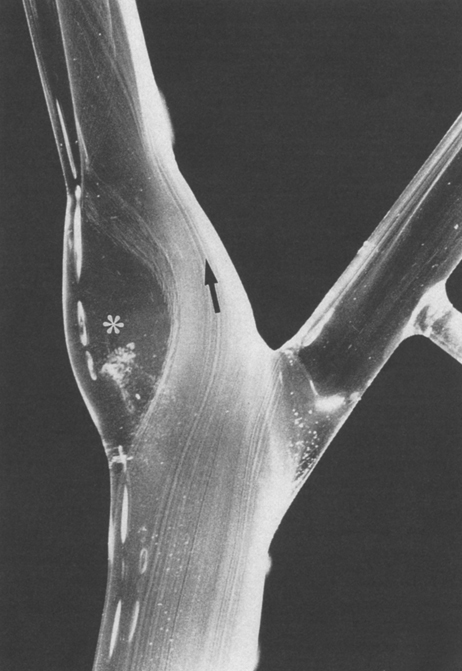A number of flow field changes occur at arterial branch points, and these are greatly accentuated in the carotid bifurcation owing to the presence of the carotid bulb. Hydrogen bubble flow visualization studies and quantitative flow field descriptions in model carotid bifurcations have revealed that blood flow in the common carotid artery is laminar. In the carotid bifurcation, flow separates at the flow divider between the internal and external carotid branches. Flow streamlines are compressed toward the flow divider, and flow remains laminar with high velocity and wall shear stress. Along the outer wall of the widened carotid bulb there is a large area of flow separation and stasis with nonlaminar flow, low flow velocity, and low wall shear stress (Figure 1). In the region of flow separation, a reversal of axial flow and slow fluid movement upstream, with complex secondary and tertiary flow patterns with counter-rotating helical trajectories, often occurs. In the distal, tapering portion of the bulb and in the distal internal carotid artery, flow reattaches to the wall, and velocity and shear stress increase. The flow profile again becomes laminar.
Pathology of Carotid Artery Atherosclerosis
Hemodynamic Conditions at the Carotid Bifurcation

Stay updated, free articles. Join our Telegram channel

Full access? Get Clinical Tree


